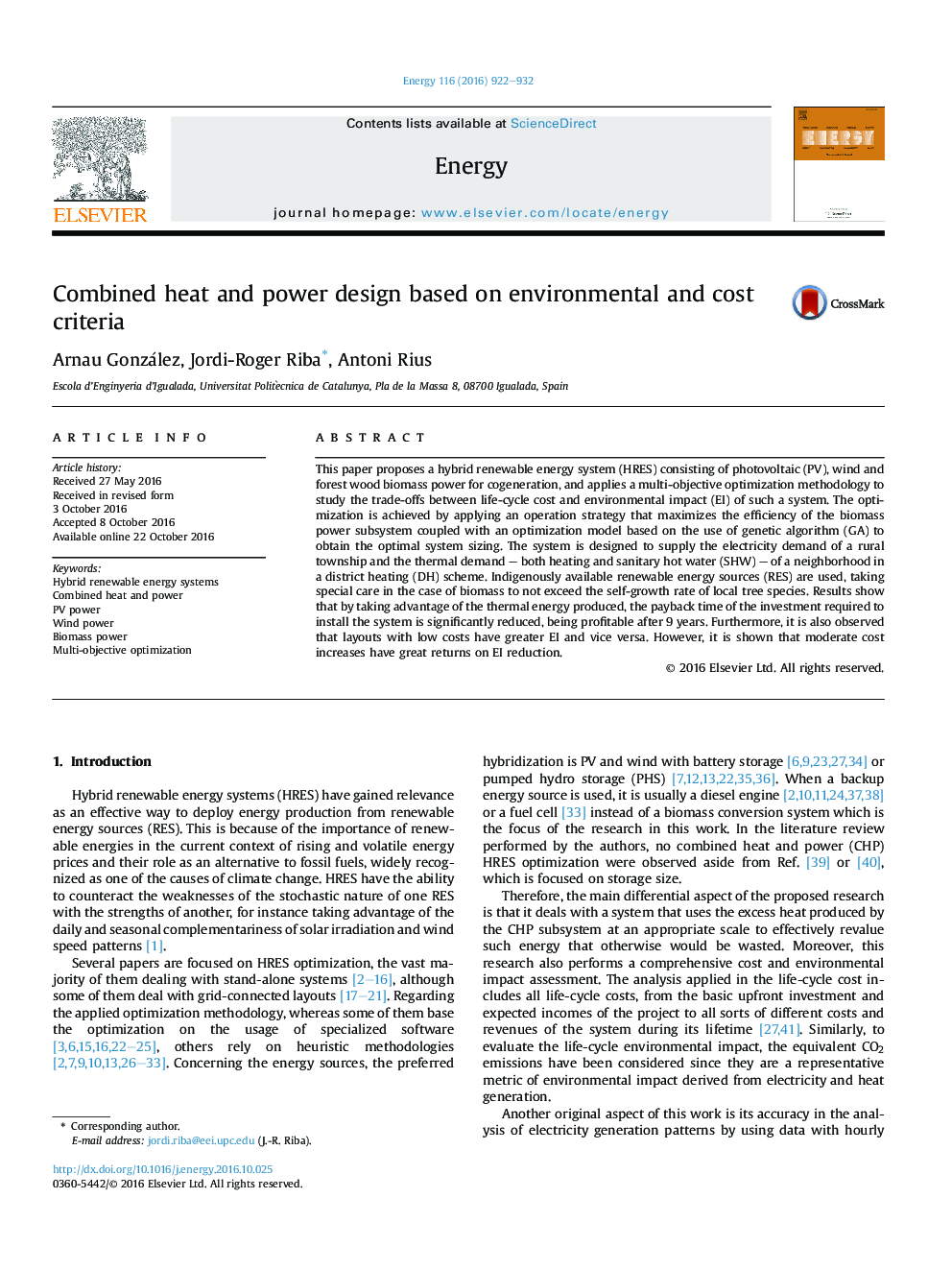| Article ID | Journal | Published Year | Pages | File Type |
|---|---|---|---|---|
| 5477341 | Energy | 2016 | 11 Pages |
â¢Combined heat and power (CHP) systems allow increasing energy generation efficiency.â¢A HRES consisting of PV, wind and forest biomass power for cogeneration is proposed.â¢It has to supply the electricity needs of a rural town and part of the heat demand.â¢A sizing optimization is applied considering life-cycle cost and environmental impact.â¢The payback time of the capital investment for such system is of about 9 years.
This paper proposes a hybrid renewable energy system (HRES) consisting of photovoltaic (PV), wind and forest wood biomass power for cogeneration, and applies a multi-objective optimization methodology to study the trade-offs between life-cycle cost and environmental impact (EI) of such a system. The optimization is achieved by applying an operation strategy that maximizes the efficiency of the biomass power subsystem coupled with an optimization model based on the use of genetic algorithm (GA) to obtain the optimal system sizing. The system is designed to supply the electricity demand of a rural township and the thermal demand - both heating and sanitary hot water (SHW) - of a neighborhood in a district heating (DH) scheme. Indigenously available renewable energy sources (RES) are used, taking special care in the case of biomass to not exceed the self-growth rate of local tree species. Results show that by taking advantage of the thermal energy produced, the payback time of the investment required to install the system is significantly reduced, being profitable after 9 years. Furthermore, it is also observed that layouts with low costs have greater EI and vice versa. However, it is shown that moderate cost increases have great returns on EI reduction.
